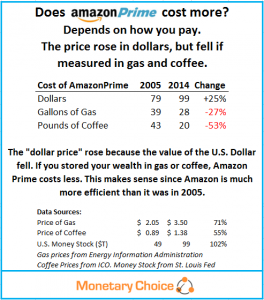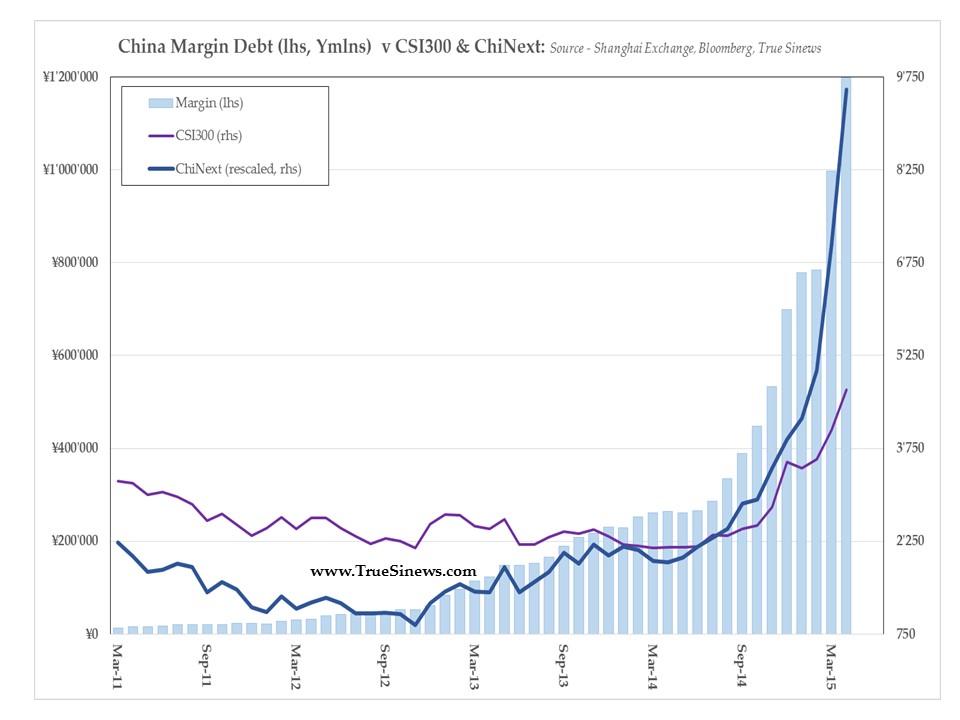Why do individuals pay much higher prices for some goods versus other goods? The common reply to this is the law of supply and demand. What is behind this law? To provide an answer to this question economists refer to the law of diminishing marginal utility.
Mainstream economics explains the law of diminishing marginal utility in terms of the satisfaction that one derives from consuming a particular good. For instance, an individual derives vast satisfaction from consuming one cone of ice cream.
The satisfaction he will derive from consuming a second cone might also be big but not as big as the satisfaction derived from the first cone. The satisfaction from the consumption of a third cone is likely to diminish further, and so on.[1]
From this, mainstream economics concludes that the more of any good we consume in a given period, the less satisfaction, or utility, we derive out of each additional unit.
Consequently, if the additional utility of a product declines as we consume more and more of it; the price that we are willing to pay per unit also declines.
Utility in this way of thinking is presented as a certain quantity that increases at a diminishing pace as one consumes more of a particular good.
Given that utility – presented as some total quantity also labelled as total utility – it becomes possible to introduce mathematics here to ascertain the addition to this total labelled as additional utility or marginal utility.
By the mainstream way of thinking, the law of declining marginal utility is derived from so-called diminished satisfaction of consuming a particular good. After consuming several ice cream cones, an individual feels that he is satiated.
On this way of thinking, human action is not navigated by reason but by biological needs. According to Ludwig von Mises,
It is impossible to describe any human action if one does not refer to the meaning the actor sees in the stimulus as well as in the end his response is aiming at.[2]
The Menger explanation
According to Carl Menger, the founder of the Austrian School of Economics, individuals rank various goals that they wish to achieve by their importance in maintaining life.
Various ends that individuals consider as the most important for the maintenance of life are assigned the highest ranking.[3] The less important ends are assigned lower ranking.
Consider John the baker, who has produced four loaves of bread. The four loaves of bread are his resources or means that he employs to attain various goals.
Let us say that his highest priority or his highest end, as far as his life is concerned, is to have one loaf of bread for personal consumption.
This means that out of the production of four loaves of bread John will retain for his personal consumption one loaf of bread. (If John will not consume the loaf of bread this could endanger his life).
The second loaf of bread helps John to secure his second most important goal, as far as life is concerned, and that is to consume five tomatoes.
Let us say that John was successful and finds a tomato farmer that agrees to exchange his five tomatoes for a loaf of bread.
John uses the third loaf of bread to exchange it for the third most important end, which is to have a shirt. Finally, John decides that he will allocate his fourth loaf to feed wild birds.
Observe that to attain the second and the third end John had to exchange his resources — loaves of bread — for goods that would serve to achieve his ends.
To secure the end of having a shirt John had to exchange his loaf of bread for the shirt. The loaf of bread is not suitable by itself to fulfil the services that the shirt provides.
The suitability of the means is what gives it value as far as a particular end is concerned. From this, we can infer that a given end dictates or establishes, so to speak, the specific means or resources that individual selects for the attainment of that end.
For instance, to secure the end of having a shirt John must decide whether it is going to be a leisure shirt or a work shirt.
John will have to select among various shirts the most suitable for his specific end — let us say to have a work shirt. Being a baker John may conclude that the shirt must be of white color and made out of thin rather than thick material to keep him comfortable while working next to a hot oven.
As far as John’s life is concerned, feeding wild birds is ranked the lowest among the ends that John is aiming at given his pool of resources — four loaves of bread.
Note that the first loaf of bread is employed to secure the most important end, the second loaf of bread the second most important end and so on. The grading of various ends is done with respect to their usefulness in maintaining life and wellbeing.
Observe, that the end assigns the importance to the resource employed to secure the end.
This implies that the first loaf carries much higher importance than the second loaf because of the more important end that the first loaf secures as far as John’s life is concerned.
Least important end sets the standard of valuation
Now, John regards the four loaves of bread in his possession as interchangeable. This implies that each loaf will have the same value as far as John is concerned. How does this fit with the fact that each loaf accommodates ends that are valued by John in a descending order? This contradiction is resolved once it is realized that John assigns to each loaf of bread the importance as imputed from the least important end, which is feeding wild birds. Why does the least important end serve as the standard for valuing the loaves of bread?
Imagine John uses the highest end as the standard for assigning value to each loaf of bread. This would imply that he values the second, third, and fourth loaves much higher than the ends he secures.
If this is the case, what is the point of trying to exchange something that is valued more for something that is valued less? (We have seen that to satisfy his second end to obtain five tomatoes he would exchange one loaf of bread. However, if John values a loaf of bread higher than five tomatoes obviously no exchange will take place).
The fourth loaf of bread is the last unit in John’s total supply. It is also called the marginal unit, i.e., the unit at the margin.
This marginal unit secures the least important end. Alternatively, we can also say that as far as John’s life is concerned, the marginal unit provides the least benefit.
If John had only three loaves of bread this would mean that each loaf would be valued according to the end achieved by the third loaf — having a shirt. This end is ranked higher than the end of feeding wild birds.
From this, we can infer that as the supply of bread declines the marginal utility of bread rises. This means that every loaf of bread will be valued much higher now than before the supply of bread has fallen.
Conversely, as the supply of bread rises, its marginal utility falls and each loaf of bread is now valued less than before the increase in the supply took place.
Note that the law of declining marginal utility was derived here from the fact that individuals use means to secure various goals or various ends.
Also, note that the ranking of various goals is determined by their usefulness in maintaining individuals’ life and wellbeing.
In John the baker’s case, the least important loaf of bread determines the value of bread out of a given supply of bread.
As the supply of bread increases, its value will decline because the marginal loaf of bread serves the least important goal as far as life maintenance is concerned.
Again, the first loaf of bread will permit to attain the most important goal as far as John the baker’s life is concerned. The second loaf of bread will permit to attain the second most important goal, etc.
Individuals do not set goals arbitrarily
Note that ends are not set arbitrarily but graded in accordance with their importance in maintaining life and wellbeing.
Whilst it is true that valuations are done by the subject i.e. an individual, they are however, not arbitrary. Individuals are valuing available means at their disposal against the goals that will enable them to maintain their life and wellbeing. In this sense, subjective valuations are in accordance with the facts of reality i.e. not arbitrary.
If John had ranked his ends randomly then he would have run the risk of endangering his life. For instance, if he had allocated most of his resources to clothing and feeding wild birds and very little to feeding himself he would run the risk of weakening his body and becoming seriously ill.
Furthermore, marginal utility is not, as the mainstream perspective presents, an addition to the total utility but rather the utility of the marginal end.
There is no such thing as addition to total utility because of the additional unit of a good. Utility is not about quantities but about priorities or the ranking that each individual sets with respect to his life.[4]
Obviously one cannot add priorities. Since total utility does not exist as such, various mathematical methods that were introduced in economics and in the modern portfolio theory (MPT) to deal with total utility and marginal utility are questionable.
According to Rothbard,
Many errors in discussions of utility stem from an assumption that it is some sort of quantity, measurable at least in principle. When we refer to a consumer’s “maximization” of utility, for example, we are not referring to a definite stock or quantity of something to be maximized. We refer to the highest-ranking position on the individual’s value scale. Similarly, it is the assumption of the infinitely small, added to the belief in utility as a quantity, that leads to the error of treating marginal utility as the mathematical derivative of the integral “total utility” of several units of a good. Actually, there is no such relation, and there is no such thing as “total utility,” only the marginal utility of a larger-sized unit. The size of the unit depends on its relevance to the particular action.[5]
Summary and conclusions
The heart of price determination is the law of declining marginal utility. According to mainstream economics, this law is linked to the intensity of individual’s satisfaction with respect to a particular good. The satisfaction declines with the greater supply of a particular good. On this way of thinking, the intensity of satisfaction is the key in determining the price of a good.
The alternative approach of what gives value to a good is the usefulness of the good to secure individuals’ ends. The importance of various ends is established in accordance with their importance in maintaining individuals’ life and wellbeing.
[1] Case, Karl E., and Ray C. Fair. Principles of Microeconomics (7th Edition) (Case/Fair Economics 7e Series). Amsterdam: Prentice Hall, 2003.
2 Ludwig Von Mises The Ultimate Foundation of Economic Science. Chapter 2 Mises Institute website.
[3] Carl Menger, Principles of Economics, chapter 3.
[4] Murray N.Rothbard, Man,Economy,and State with Power and Market pp 302-310
[5] Ibid pp 305-306.



